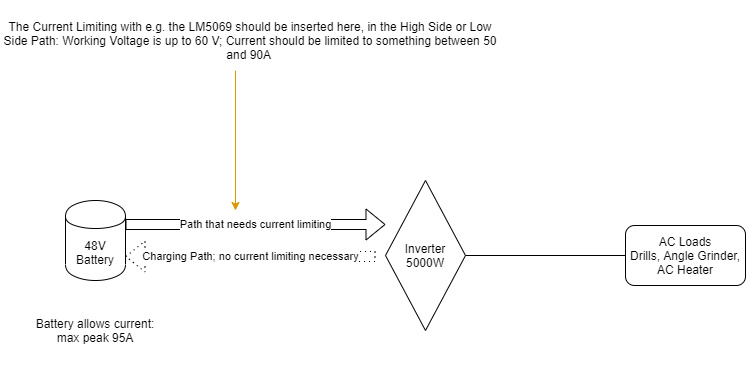Other Parts Discussed in Thread: LM5066, TPS1663
Dear everyone,
I have an LM5069 and want to use it for Current Limiting. My setup is an 48V LiIon battery on an inverter. And I want to limit the currents that flow in operation through power tools as drills on the DC side, so between Battery and Inverter. And in my prototype transients pass through unlimited. Since my battery shuts off at an overcurrent event of 95A, it then shuts off. So, I wonder if the LM5069 circuit is fast enough and suitable for my application
The continuous load dont trouble the battery, the short transients during startup of the AC loads are the problem, cause they reach up to 150A in the DC side for a couple of milliseconds (Waveform attached) - measured across a 200A/60mV shunt
.
The inverter/charger has an input capacitor of around 3mF. But charging that input capacitor didnt cause any problems so far.
And for the first prototype it is not so necessary, that the circuit must also allow for a charging of the battery through the inverter, so current in the opposite direction. But if anyone knows a solution that also accounts for that, it would be even better.
I dimensioned the LM5069 circuitry using the excel tool, my schematic looks like this:
In my understanding this circuit should limit the current as soon as the voltage between Vsense and Vin is over 55mV. Or is that only working once at startup conditions?
Any help would be highly appreciated.



